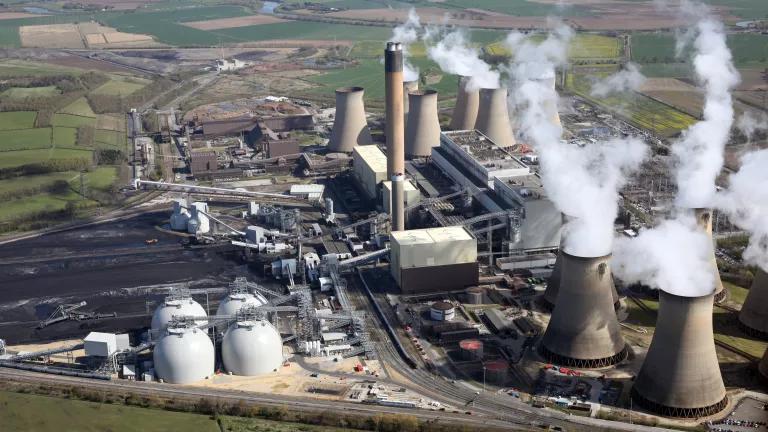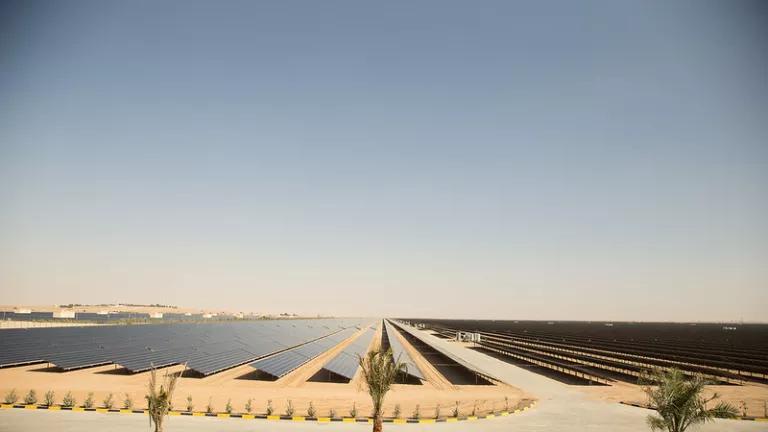10 Facts About Drax on the Eve of its Annual Results Release
Here's the real story that shows why the UK government should immediately end biomass subsidies and redirect those funds to true renewable energy sources like wind and solar.

Aerial view of Drax Power Station—the UK's largest biomass plant. Does this look like "clean energy" to you?
Tomorrow, Drax will release its annual financial information for 2021. In doing so, it will undoubtedly continue to greenwash biomass, which far from being a “renewable energy,” worsens climate change, harms communities, and decimates forests and the wildlife that calls them home. And if its earnings are rosy—as I'm guessing they will be—it's only because the UK government subsidizes them with £2.3 million a year.
Here are ten disturbing facts about Drax that tell the real story and show that the UK government should immediately end biomass subsidies and redirect those funds to true renewable energy sources like wind and solar.
#1 Drax is the UK’s top source of CO2 pollution. In 2020, the company directly emitted nearly 16,000 ktCO2e into the atmosphere. Beginning in 2019, carbon emissions from burning biomass in the UK electricity sector exceeded those from coal and were second only to emissions from burning fossil gas.
#2 Drax is one of Europe’s top five emitters of PM10 air pollution. The scale of wood burning by Drax each year puts it in the same notorious company as some of Europe’s worst coal-fired power plants.
#3 In 2020, Drax imported over 7 million metric tonnes of wood pellets to burn at its power plant. Over half were made from whole trees. Scientists warn that burning forest biomass, such as what is burned at Drax, is not effective in mitigating climate change and may increase the risk of dangerous climate change.
#4 Wood entering Drax’s supply chain routinely comes from clearcuts of old and biodiverse forests around the world that are home to a host of species, including rare birds, and serve as vital carbon sinks.
#5 Less than 1% of the biomass burned at Drax comes from within the UK. Contrary to Government statements about shifting to domestic biomass sources, Drax is rapidly building and buying pellet mills abroad, locking in import supply chains. In 2021, Drax made its largest acquisition, a £436 million purchase of Pinnacle Renewable Energy despite concerns about the company’s destructive footprint in sensitive Canadian forests. In Canada, Pinnacle’s (now Drax’s) pellet mill “haul zones” overlap with critical primary forests and habitat for the threatened woodland caribou.
#6 Drax’s stock was recently downgraded by Citi, which noted that, “we do not fundamentally see biomass as a sustainable source of energy.” Drax was also dropped from the S&P Global Clean Energy Index over concerns about its poor environmental performance.
#7 Drax currently faces criminal prosecution over health harms to its workers from wood dust at Drax Power Station.
#8 Last year, Drax was fined $2.5 million over serious air quality breaches at its pellet mill in Gloster, Mississippi—the largest known fine ever levied on such a facility. Communities in the region with Drax-owned mills in their backyards report that wood pellet production comes with dust, noise 24/7, and other negative impacts, which perpetuate decades of environmental racism.
#9 Drax has benefited from £5 billion in subsidies from 2012-2020 and is projected to receive a further £5 billion from 2020-2027. Drax’s subsidies totaled £832 million in 2020, paid for by UK households via a fee on home energy bills.
#10 Drax is lobbying the Government to grant it large new subsidies to add carbon capture technology to its plant. Think tank Ember estimates this project will require £31.7 billion. Drax is trialing so-called BECCS technology, but has yet to capture any meaningful quantity of CO2 at its power station.



